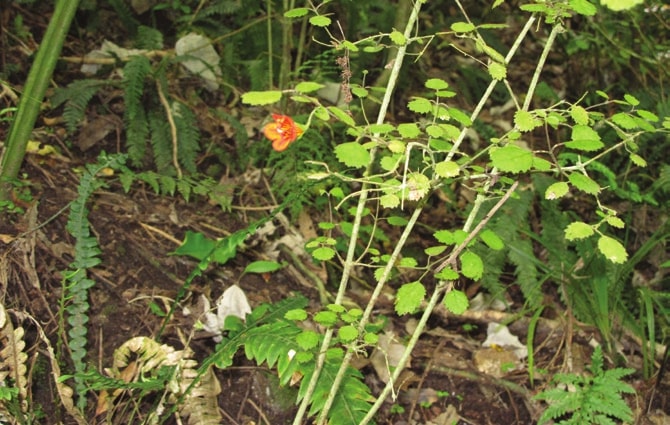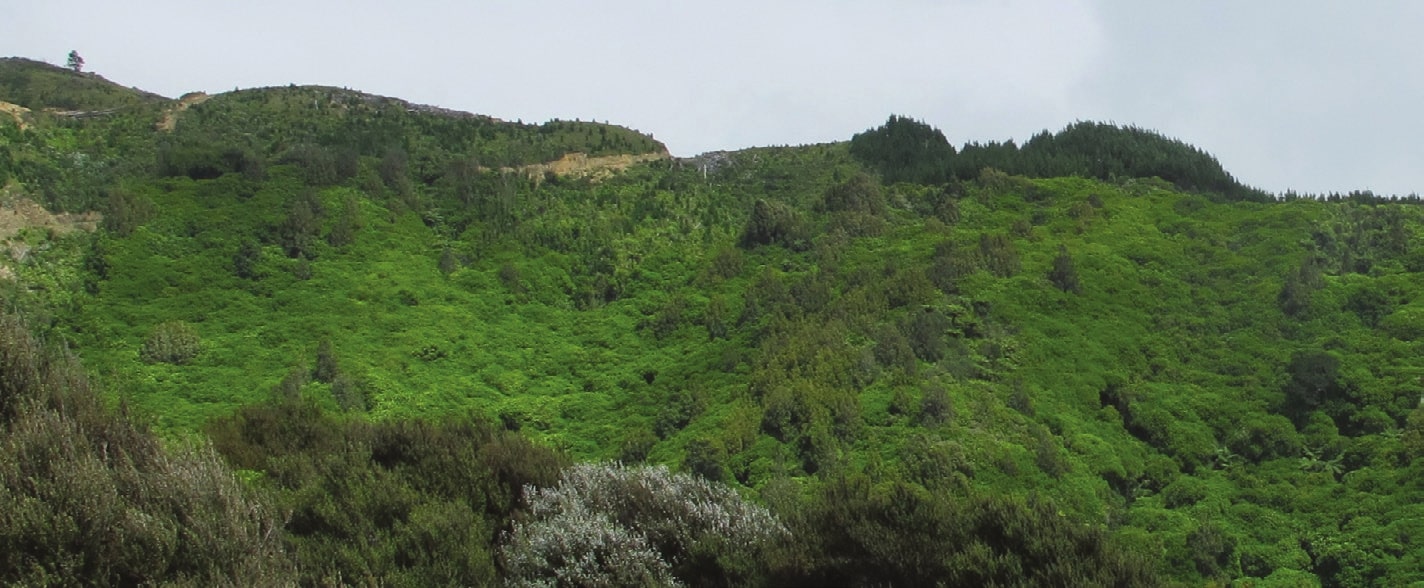Experiences with the QE II National Trust: a gift that keeps giving
Jeremy Collyns, New Zealand Tree Grower February 2021.
We own 40 hectares of land at Pauatahanui which is part of Porirua City, just north of Wellington. This land was part of the early settlement plans of the New Zealand Company in 1840 when the deal was made that by purchasing a city section in Wellington, a country section of 100 acres would be given free and which would be suitable for dairy farming.
These sections were unseen, the deal being carried out in London along with survey lines being drawn before the new settlers left London. This makes the present boundary lines interesting and they often go straight up mountains so it can be quite a challenge to build access roads and fences.
The land was part of a sheep farm when we bought it although it was marginal to farm at the best of times. It is across the road from Battle Hill, one of Greater Wellington Regional Council parks – which incidentally will be part of one of the field days at the 2021 NZFFA conference in March.
Battle Hill is the site of the last battle between the Crown and Ngati Toa following the Wellington land purchase by the New Zealand Company. This was in 1846 and was fought with Ngati Toa dug in on top of the hill and the Crown forces attacking up the hill. The battle took place in heavy bush such as exists today near the battle site and this bush extends into our land.
After a number of days, the battle finished with the Ngati Toa chief Te Rangihaeta escaping northwards and Te Rauparaha imprisoned. It was then safe for the settlers to take up their land and to make the dream promised by the New Zealand Company come true. This makes the bush special because it is a reminder of what the land was like for those early people to come and settle.
The land is on the Paekakariki Hill road which was the old main road built by the military and settlers before the coastal road was built in the 1930. It now overlooks the new Transmission Gully motorway which is the replacement for the coastal road, almost a full circle.
Getting started 40 years ago
The covenanted land forms two parts which totals 18 hectares. The front area of bush is the older part with the back area being recent regeneration just over 50 years old. Our first job when we bought the land 40 years ago was to draw up a forest and farm plan. This identified areas of bush to protect and forest to plant. With the plantation forest, the plan laid out which species to plant as well as the riparian zones which we added to the covenanted areas so not to cause problems when logging.
On the front bush the vegetation today consists of regionally uncommon semi-coastal forest with a canopy of kohekohe, tawa, with occasional podocarp species. The understorey contains mahoe, kaikomako, nikau, some coprosma species along with many other tree and shrub species. Uncommon species include maidenhair ferns, greenhood orchid and four mosses. It also contains a regionally rare plant Rhabdothamnus solandri.
The back area of bush is younger and has a canopy of the tree fern mamaku but is showing good regeneration of all the species found in the front bush. Both bush areas and the plantation forest form strong ecological links with the Hutt Valley and Pukerua Bay along vegetated corridors which allows the movement of mobile native species.

Working with the QE II Trust
We started the with the QE II Trust over 40 years ago and were the tenth covenant signed in New Zealand. This was on what we call our front area of bush, approximately nine hectares of the 40 hectares we own.
All those years ago it was a very different New Zealand. farmers were paid to clear land and the government gave money to farmers per head of sheep to build up sheep numbers. Conservation was very much a dirty word. In fact, giving up the land and making it a QE II Trust covenant confirmed to our neighbouring farmers that we were mad.
Before we did this, we decided to fence and carry out animal and weed control. Having no money, we asked our neighbour to contribute to the fencing material and we would construct the fence along the boundary. After this work was carried out the neighbour, holding the balance of our mortgage, realised that the bush was looking so good with the stock out of it he wanted the bush named after himself. He refused to sign the covenant documents until this was done. We had to wait until we discharged the mortgage, which took a few more years, before signing up.
The other problem we faced was that we were surrounded by a group of matchbox farmers – they liked to burn everything. We countered that by clearing and planting an exotic forest on the remaining land, working to an environmental plan based on water bodies and wind exposure.
The rules about burning down exotic forest was much stronger than burning down the bush. Any farmer starting the fire would be faced with the costs of fighting the fires as well as the replanting costs of the exotic forest. This was tested when one neighbour lit a fire during a closed fire season. It led to an investigation by the rural fire authority and although everyone denied having any knowledge, it stopped the burning virtually overnight.
By this stage our rear neighbour was demanding a new boundary fence but did not want it burnt as had happened to other fences, so wanted it built using concrete posts. This required was a full summer of weekend work but formed the start of fencing the area, which I agreed to. However, never again will I build a fence using concrete posts on this steep country.
Fencing the new covenant took a few more years of weekend summer work to compete and was named after my father for all his hard work. This also completed a wildlife corridor from the Akatarawa Forest to Pukerua Bay using both the covenants and the exotic forest as stepping stones.

Changing an Act of Parliament
Not all the battles were with the neighbours. There were the pest animals to contend with. The council were helpful in the early days in giving rates relief, but this changed with local body amalgamation and a new council in 1989. Within weeks we received a rates demand for the covenanted areas. We submitted our case to the full council meeting, along with other covenant owners, pointing out that 100 of the other local bodies were giving rates relief in such cases. This was met with a statement from the council that if we could get our own legal advice to prove they were wrong in taking away our rate relief they would reinstate it.
We returned to the QE II Trust for advice on this and they went back to Parliament and had the act changed to made it clear on the relief of rates. This all took some time but we won that round and got the rates relief back.
A new battle
Mean while the regional council declared the front bush area a key native ecological system. This is one of the few in private ownership in the Wellington area because it contains an endangered and rare plant and is one of the larger privately owned bush areas in Porirua City. We developed an agreed management plan and they supply pest control traps and poisons which we maintain across the property.
The local council suddenly recognised the value of the bush to the landscape. The present battle with the city council is over the Significant Natural Area rules they have imposed on us. The submission is currently with the council pointing out these rules bypass our legal agreement we have with the QE II Trust and the management agreement we have with Greater Wellington Regional Council. The council’s new rules do little to protect the surrounding native forest areas with no requirement to fence and to control the pest species.
Throughout the 40 years of business with the QE II Trust we have watched it grow into the professional conservation body it is today. The help and advice received in protecting our native forest areas has backed our decision in having the land put into a covenant all those years ago. Were we mad or just ahead of time? I go with the latter.
Jeremy Collyns is a member of the Wellington Branch.

 Farm Forestry New Zealand
Farm Forestry New Zealand

